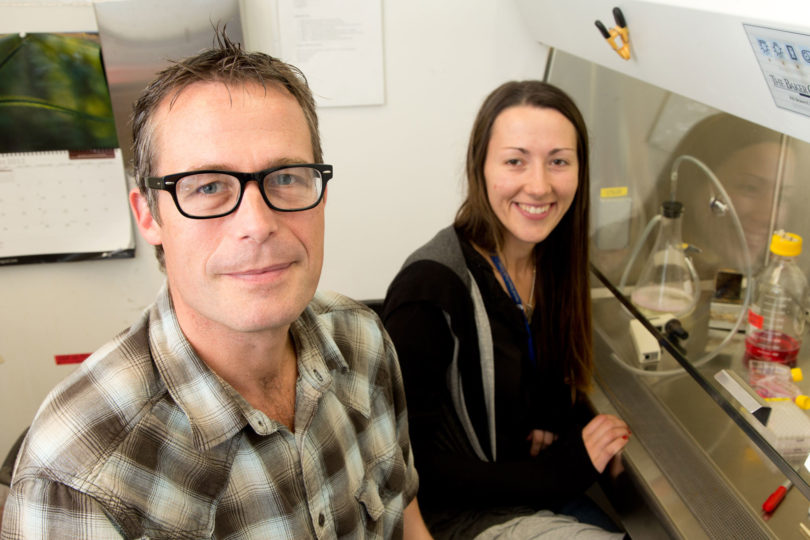A disease called toxoplasmosis is considered to be a leading cause of death attributed to foodborne illness in the U.S., according to the Centers for Disease Control and Prevention. Yet scientists have struggled to understand how Apicomplexan parasites that cause toxoplasmosis and numerous other diseases divide and grow.
Now, in research published in the Proceedings of the National Academy of Sciences, a team of scientists led by Boris Striepen at UGA has shown for the first time that a structure called the centrocone serves as a “master organizer” of chromosome location. The study found that the chromosomes, which package DNA in the nucleus of cells, are constantly tethered by the centrocone, an arrangement that allows Apicomplexans a highly flexible cell division process suited to the demands of parasitism.
The discovery could lead to new understandings about toxoplasmosis and other Apicomplexa-mediated diseases such as malaria and may ultimately serve as an important point of intervention in therapies to control the diseases.
“The genetic blueprint for the parasite is encoded on its chromosomes, which are housed in the nucleus, an arrangement typical for almost all cells,” said Striepen, professor of cellular biology and Georgia Research Alliance Distinguished Investigator in the UGA Center for Tropical and Emerging Global Diseases. “Where the parasites differ from almost all other cells is how the chromosomes are organized in the nucleus. Using Toxoplasma gondii, which can be easily manipulated in the lab, we discovered that all 14 chromosomes appear to be constantly attached to the spindle-not only during mitosis but through the intracellular development of the parasite.”
Other authors on the paper are Mathieu Gissot, Matthew Croken and Kami Kim of the Albert Einstein College of Medicine, and graduate student Maria Francia and lab coordinator Carrie Brooks of Striepen’s lab at the CTEGD.
Toxoplasmosis is carried by more than 60 million men, women and children in the U.S. alone, according to the CDC. Few have symptoms, though, because the immune system normally keeps it in check. Still, unborn children and people with compromised immune systems face serious health problems from it. Of more importance, though, is the fact that a related
Apicomplexan parasite is responsible for malaria, a disease that kills an estimated one million victims a year worldwide. Understanding the mechanisms of cell division in one of the parasites could open doors in knowing more about others in the same phylum.
The study defined the centromere of the parasite chromosome, the region of DNA near the middle of a chromosome that is involved in cell division and is the point where the microtubules of the mitotic spindles are attached. (These spindles are involved with separating the chromosomes into the daughter cells during cell division.)
“Apicomplexa have evolved distinct cell-division types,” said Striepen, “and these parasite species can switch from one division mode to another depending on the developmental stage, thus fine-tuning replication to different tissue and host-cell environments.”
If the parasites that cause malaria do indeed organize their chromosomes similar to the way shown in this study for T. gondii, an entirely new area of research-and possible disease intervention-could open.








